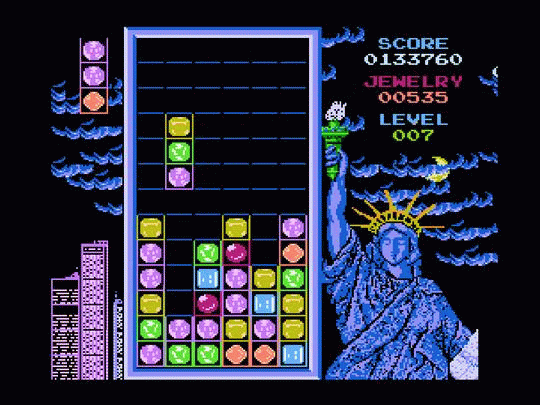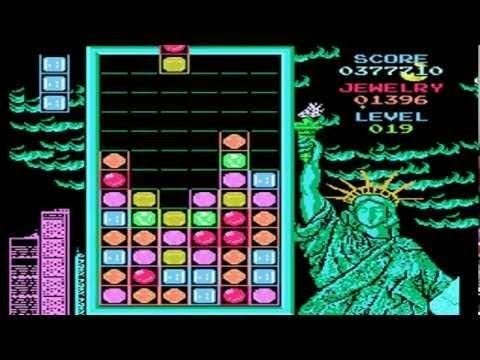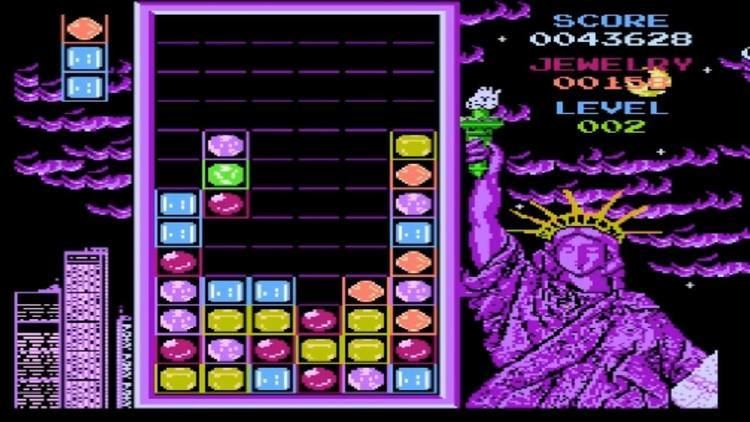9.2 /10 1 Votes
Publisher(s) RCM Group | 4.6/5 Google Play Initial release date 1990 | |||||||||||||||||||||||||||||||||
 | ||||||||||||||||||||||||||||||||||
Similar Lunar Pool, Sky Destroyer, Road Fighter, MotoRace USA, Nuts & Milk | ||||||||||||||||||||||||||||||||||
Magic Jewelry is a NES unlicensed tile-matching puzzle video game derivative to Columns, which was programmed in Taiwan by Hwang Shinwei and published by RCM Group in 1990, without a license from Nintendo.
Contents

This title is common on pirate Famicom multicarts and systems; for example, it's built into the Dynavision and Power Player Super Joy III but existed also two hacked versions, called respectively Abacus and Coin Tetris (the first only on N-Joypad).

Various unofficial clones have been released for iOS and Android.
Gameplay

Magic Jewelry's mechanical is similar to Columns by Sega, in which the scores are obtained with the combination of a line made up of three or more colorful jewelry (horizontally, vertically or diagonally), using-moving-positioning three column pieces falling in a rectangular playing field. Once the combined column drops its pieces on other jewels, if there's a removing chain reaction the player earns additional scores. It also goes to the next level when the white "X" column, falls on a jewel causing the removal of any of the same color; however, the same column if dropped on an empty part makes getting a normal score. Finally, the game is over when only one column touches the field's upper edge.
Background

It mainly represents New York City with a depiction of the Statue of Liberty appearing in the screen's right side, but is taken from the intro of Golgo 13: Top Secret Episode, a 1988 game for NES. In addition to that there are clouds, stars, and the half-moon who repeatedly moves from down to up.
Music

There are eight songs in Magic Jewelry, along with various remixes in Levels 8-15. Upon gaining a level, the music advances to the next track, eventually cycling back to the music for Level 0.

Note: The first stage song was also used in Brush Roller, another Hwang Shinwei's unlicensed NES game dating back to 1990.
Sequel
In 1991, appeared a sequel titled Magic Jewelry II (always programmed by Hwang Shinwei and published by RCM Group), that which was less known due to its first appearance in a "150-in-1" multi-game cartridge. Several features were added in this release.
Note: When the game begins, a voice speaks in an incomprehensible way probably saying, "Are You Ready?".
The same eight songs of the first game were also used in this sequel, though "Moonlight on the Colorado" became the theme for Level 8; "Tennessee Waltz" by Cowboy Copas took its place for the theme for Level 5. Additionally, the starting song varies depending on the column theme.
